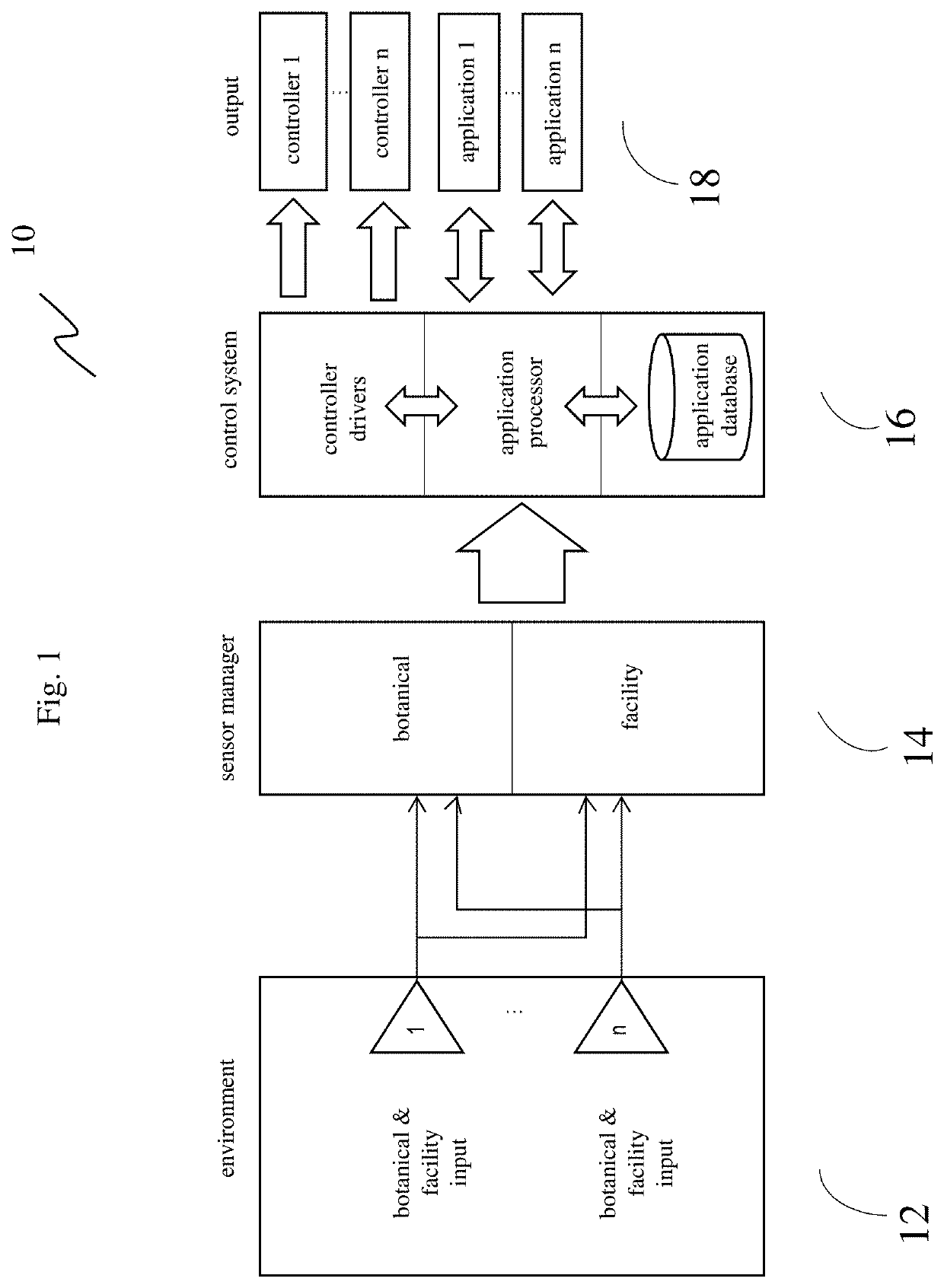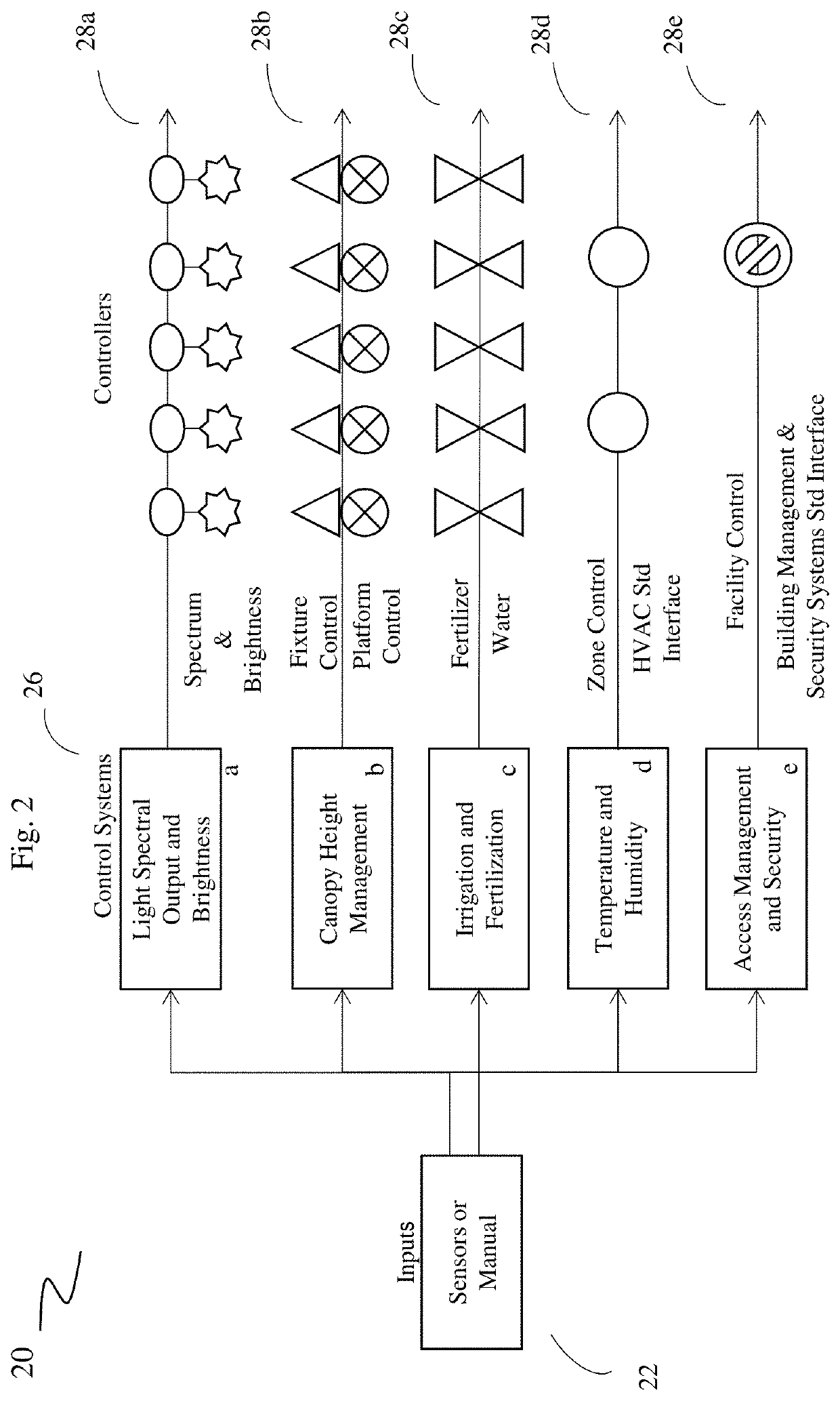Spectral deficiency driven control systems and methods in plant growth automation
a control system and spectral deficiency technology, applied in the field of integrated feedback-driven control systems and methods, can solve the problems of poor light quality, poor control effect, and inability to integrate sensors/controls, and achieve the effect of maximizing the light-producing
- Summary
- Abstract
- Description
- Claims
- Application Information
AI Technical Summary
Benefits of technology
Problems solved by technology
Method used
Image
Examples
Embodiment Construction
[0041]The following is a detailed description of embodiments of the invention depicted in the accompanying drawings. The embodiments are introduced in such detail as to clearly communicate the invention. However, the embodiment(s) presented herein are merely illustrative, and are not intended to limit the anticipated variations of such embodiments; on the contrary, the intention is to cover all modifications, equivalents, and alternatives falling within the spirit and scope of the appended claims. The detailed descriptions below are designed to make such embodiments obvious to those of ordinary skill in the art.
[0042]As stated above, the traditional way of collecting data and integrating those inputs for conversion into an automated flow of plant management controls is now struggling to cope with new challenges brought by the growing complexity of an array of sensors, vast data points, segregated controllers, and the innumerable number of applications. Embodiments disclosed include ...
PUM
 Login to View More
Login to View More Abstract
Description
Claims
Application Information
 Login to View More
Login to View More - R&D
- Intellectual Property
- Life Sciences
- Materials
- Tech Scout
- Unparalleled Data Quality
- Higher Quality Content
- 60% Fewer Hallucinations
Browse by: Latest US Patents, China's latest patents, Technical Efficacy Thesaurus, Application Domain, Technology Topic, Popular Technical Reports.
© 2025 PatSnap. All rights reserved.Legal|Privacy policy|Modern Slavery Act Transparency Statement|Sitemap|About US| Contact US: help@patsnap.com



